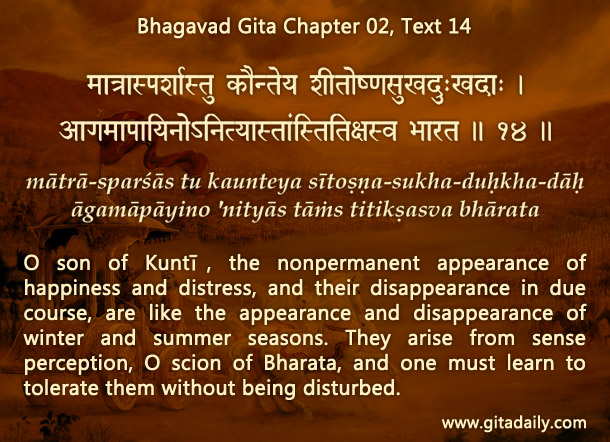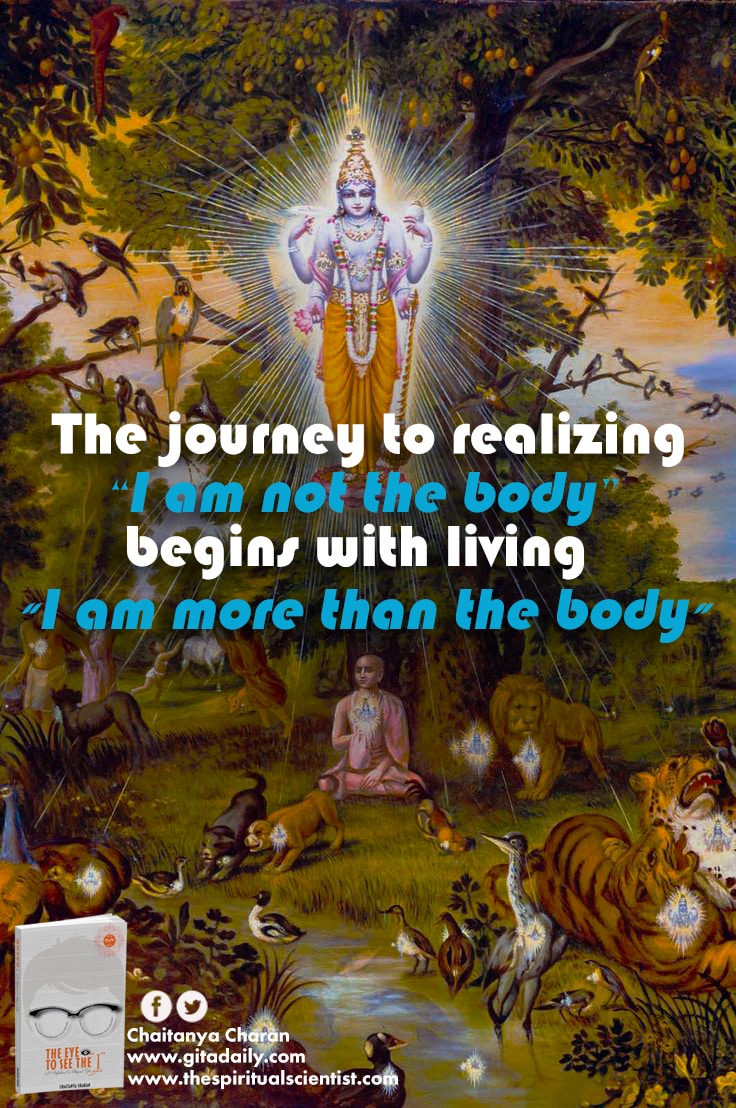The Bhagavad-gita’s fundamental teaching (02.13) is that we are not material bodies but are spiritual beings.
Even when we understand this intellectually, we can’t abruptly reject our bodily identity. Pertinently, the next verse (02.14) recommends that we stick to our dharmic duties by tolerating bodily stimuli like heat-cold or pleasure-pain. And the next verse (02.15) assures that such dutiful living, unswayed by bodily stimuli, will grant immortality. As the soul is known to be immortal, this verse’s assurance essentially means that we will realize our spiritual identity.
The Gita’s trajectory of thought suggests that we can progress towards realizing “I am not the body” by striving to live according to the understanding, “I am more than the body.” Living thus means that we don’t let the body’s needs and drives consume all our time. We give our non-bodily or spiritual side due attention by practicing diligently a process for self-realization. The best such process is bhakti-yoga because it engages the body in the service of Krishna, thereby transforming it into a tool for raising our consciousness to the spiritual level.
When we tolerate bodily inconveniences while practicing bhakti-yoga, we periodically relish a profound non-bodily fulfillment. This fulfillment vindicates for us the reality of our non-material side. We infer that since the fulfillment is obviously not coming from bodily gratification, it must be coming from our spiritual side that is being nourished by our devotional practices.
Such insights inspire us to intensify our devotional service, thereby triggering further insights. Gradually, our realization rises from “I have a non-material side” to “My non-material side is the real me. I am a spiritual part of Krishna meant to love him eternally.” This realization ultimately catapults us to the supreme liberation – ecstatic life with Krishna.

Explanation of article:
Podcast:



Hare Krishna!! Prabhuji,
“More than a body”, very nice explanation with wonderful insight of body concept. This really makes sense in realizing our spiritual consciousness that we are not the body.
Thanks.
Hare Krishna Prabhuji
PAMHO
Thank you very much for such a nice explanation in relation to those three verses.
We always tend to say that “we are not this body; we are a spirit soul”. But the very title of your explanation has such a deep meaning that it really shows how we should make the utmost of this human form of life to go back to Godhead.
Each and every of your Gita Daily wisdom is such a relish.
Hari Bol
Narottama das
Amazingly amazing Prabhu Ji. Very much illuminating. Specifically that transformation from “non material side of me” to “ non material side is me “
Harekrishna 🙏
Thanks for the specific comment – happy to be of service.